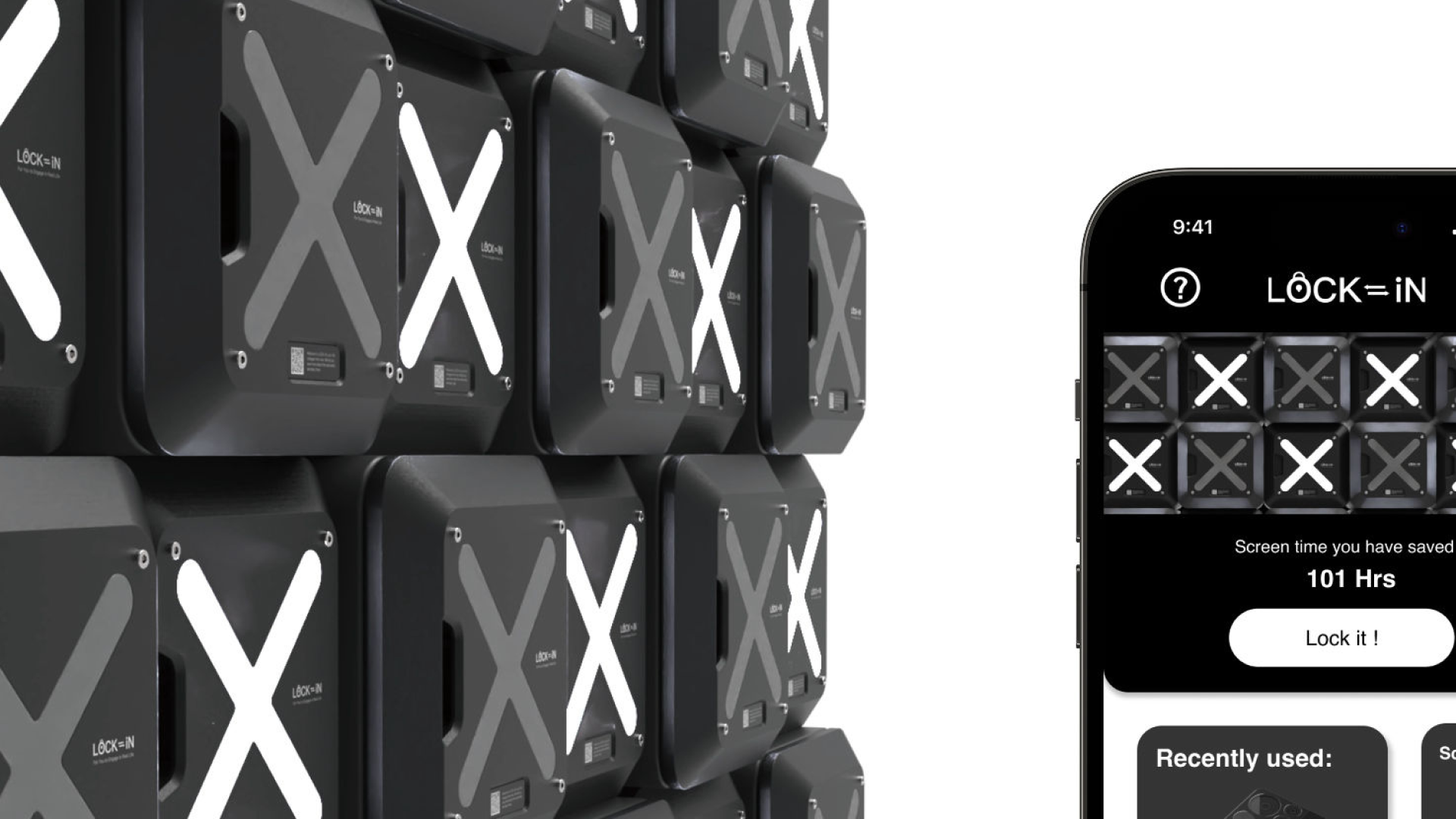
LOCK-iN
LOCK-iN gives you a good partner who helps you focus on your goals rather than your attractive phone.
LOCK-iN is a service that helps individuals struggling with
phone addiction achieve their goals by providing a limited-use
phone that allows them to stay focused and avoid distractions.
The phones provided by LOCK-iN are designed specifically for
task-oriented use, featuring features such as high-quality
cameras or bright tent lighting.
By locking away
their primary phone and using one of these specialized phones
instead, users can break free from the constant pull of
addictive screens and stay focused on their priorities. In this
way, LOCK-iN serves as a valuable resource for those seeking to
overcome phone addiction and live more fulfilling lives.
About this project
My role : Individual
User research, User experience, User Interface,
Industrial design
Main tools involved
Fusion360, Keyshot, Figma
Project duration
Rapid design : 4 days
Background
People feel anxious without their phones
Many people today have become addicted to their phones, spending all day on them and potentially hindering their ability to achieve their goals. It can be difficult to completely cut someone off from using their phone, and attempting to change the habit of excessive smartphone use can lead to anxiety.cumulation of non-biodegradable materials.
Research
The origin of Phone Addiction
Mental issues : Nomophobia - Nomophobia is the fear of being without a phone or unable to use it. This can happen because people rely on their devices for information and social connections, so it's normal to worry about losing them.
Escaping : More confidence online - Some people may feel more confident and have more relationships online than in reality, leading them to escape into the virtual world and avoid dealing with the realities of their life.
Biological reasons : Like cocaine - Receiving phone notifications can release dopamine in the brain, providing a feeling of pleasure similar to the effects of cocaine. This is because dopamine is a chemical that helps to regulate feelings of pleasure and reward in the body.
Phones : Designed to keep engagement - Smartphones are becoming more powerful and can easily provide access to a vast amount of information. However, the technology is designed to keep users engaged and hooked on their devices. For example, the "pull to refresh" feature, which is commonly used in apps to update content, was inspired by casino games like slot machines.
Personas
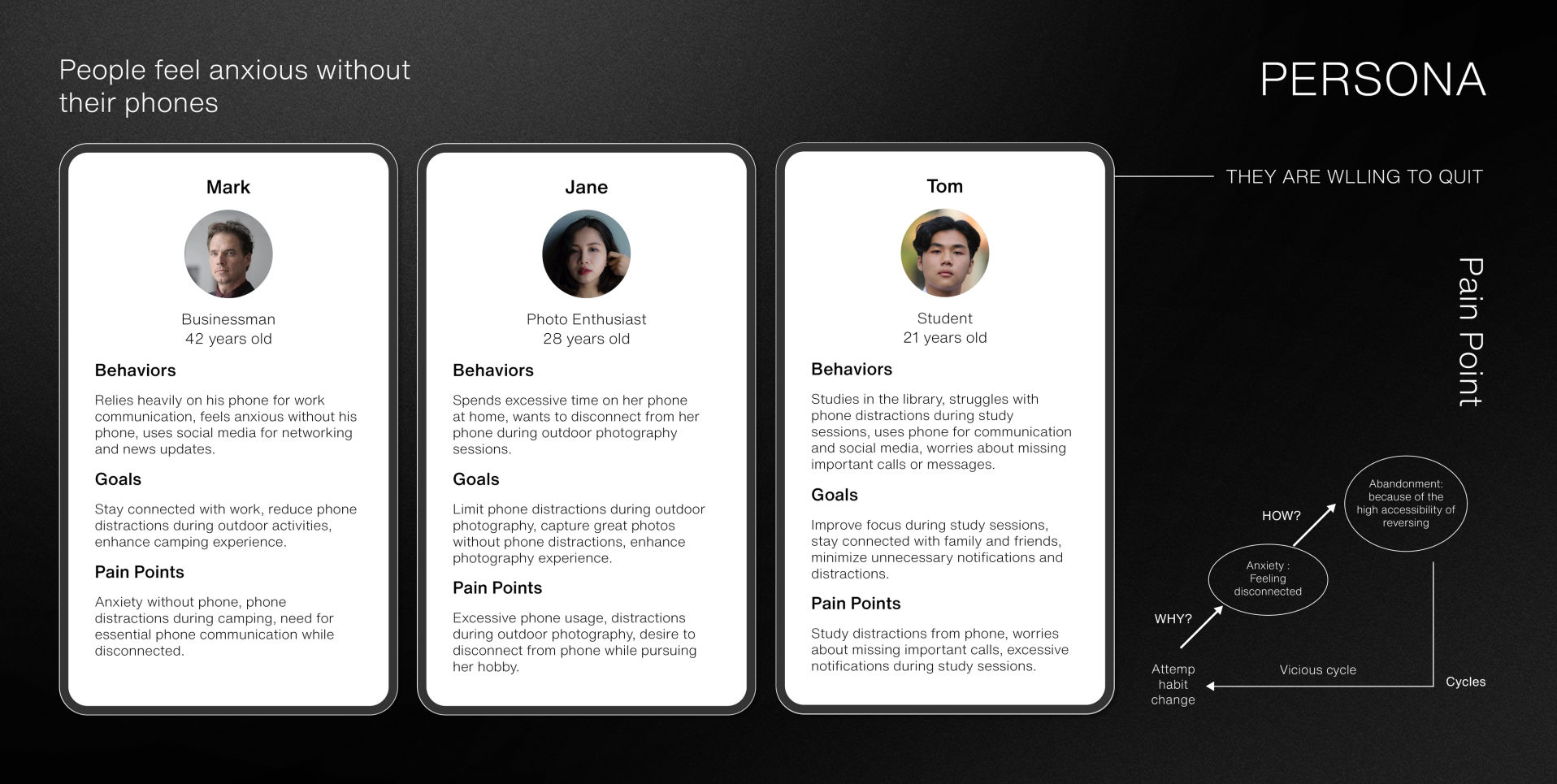
User journey map
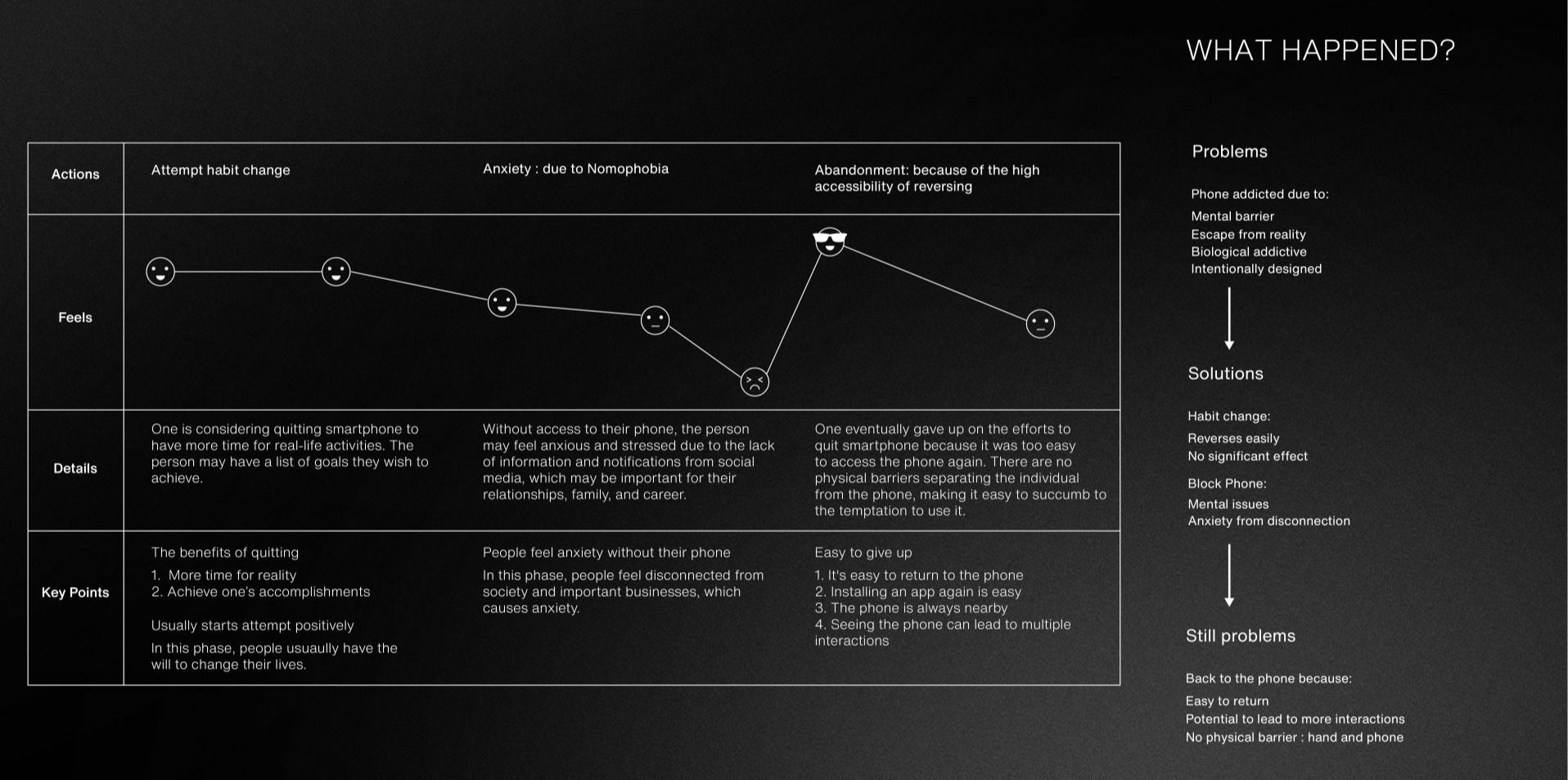
I used a journey map, which shows the steps and decisions made during a process, to identify main ideas and create a path for the design. This considers individual reactions and decisions during the quitting process.
Findings : solutions are polarized
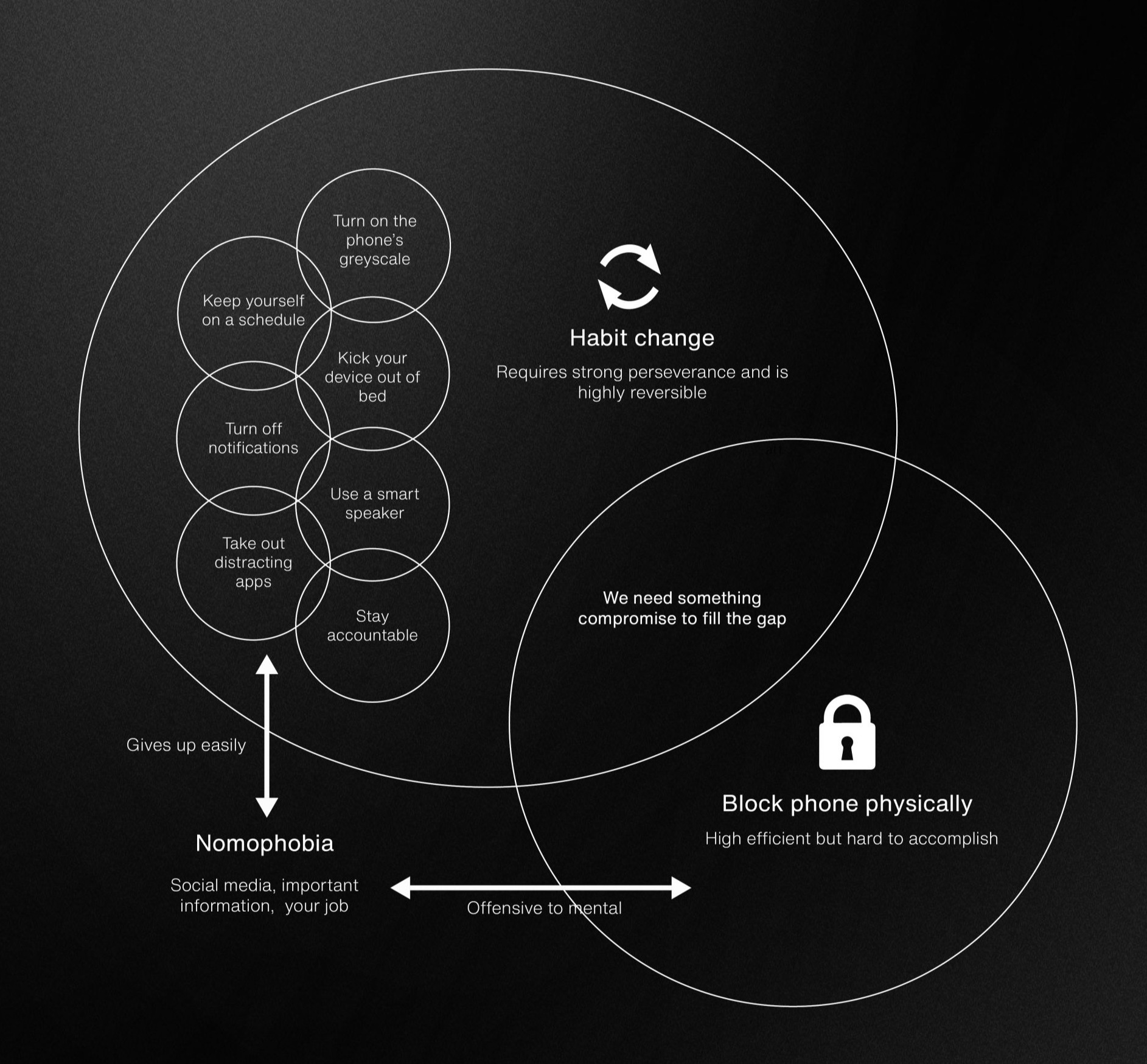
People may choose to quit their phones in order to engage in other activities, but the constant notifications and pressure from their phone can interrupt and interfere with these activities.
Possibility
What about exchanging the user's phone to a tool that helps other activities?
Changing the phone into a tool that only provides necessary communication capabilities and helps with specific tasks may prevent excessive phone use and addiction.
The design idea
An alternative for staying connected - People may feel anxious about being disconnected from others and missing important information, so a phone that has the most urgent social demands could help alleviate this anxiety.
Helps focusing on activities - The design should not only prevent phone use but also enhance people's experience of activities like studying, exercising, or camping. By providing another phone that supports and improves their engagement in these activities, the design can help individuals fully embrace their new, phone-free lifestyle.
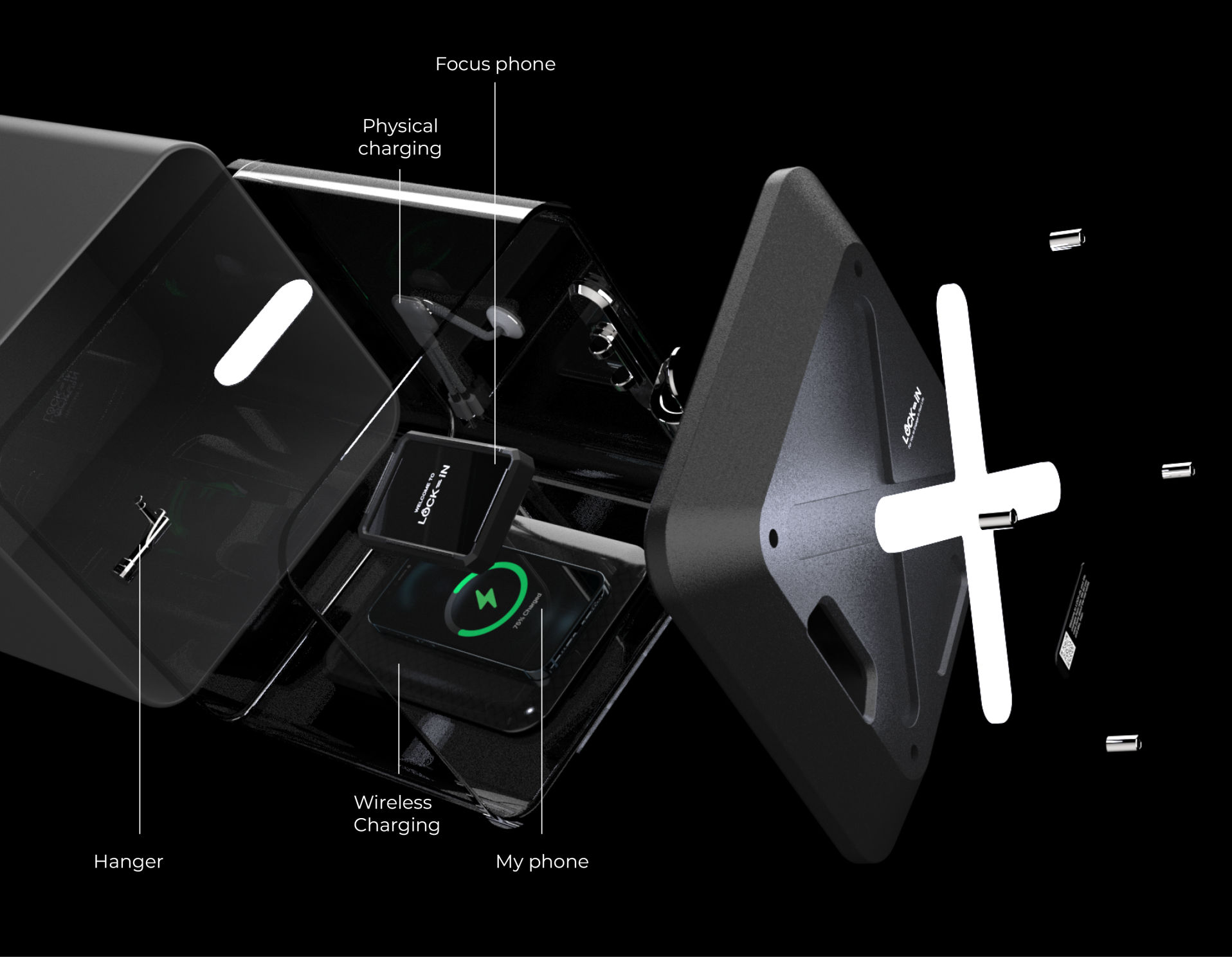
Scan to rent
Find the flashing box - The light indicator turns on when the block is available, and it flashes when the user searches for it using the app. The light indicator turns off when the block is not available, when it is occupied or undergoing maintenance.
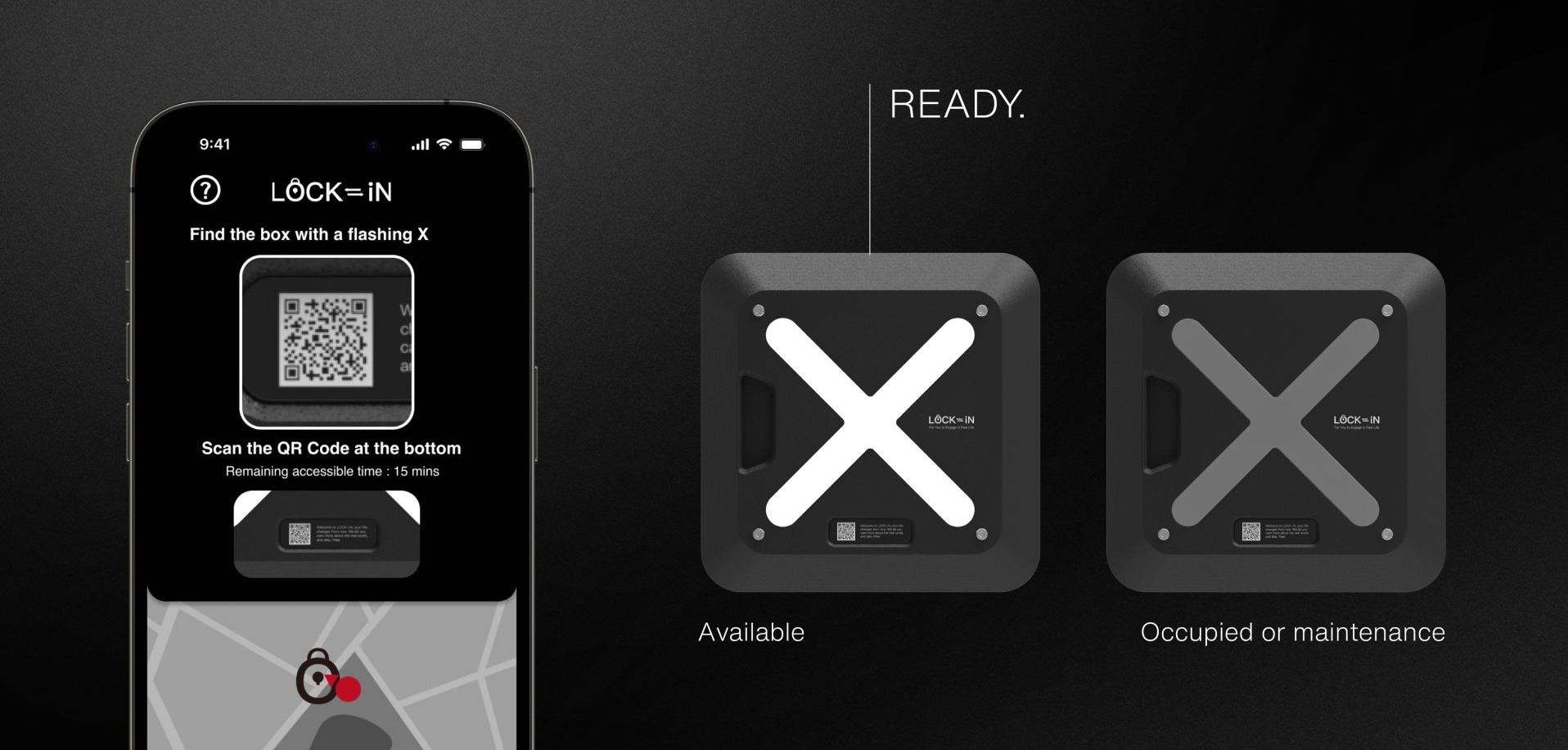
Phones to exchange
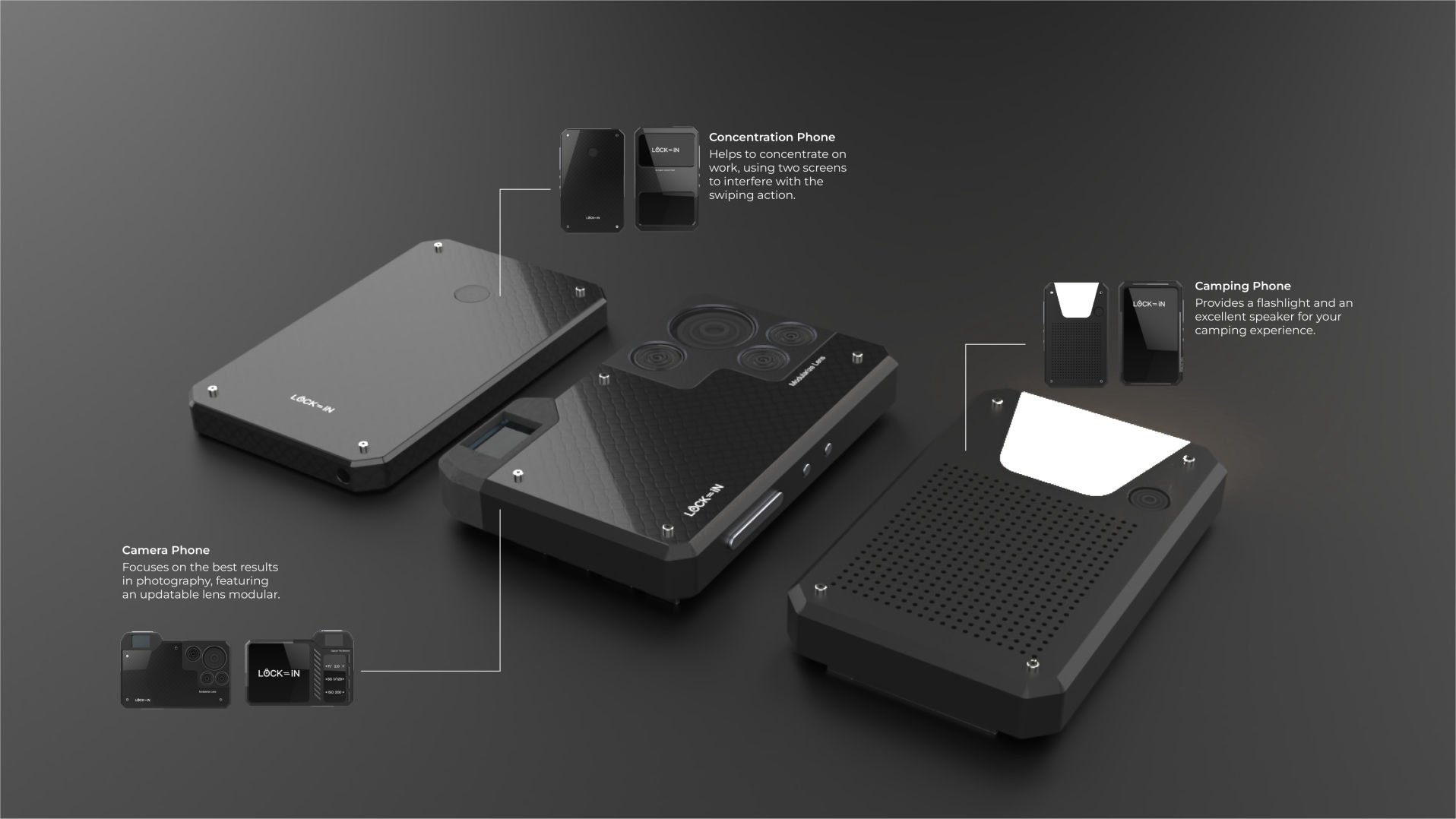
The LOCK-iN service offers a variety of phones that are designed to support individuals in engaging in different activities. These phones function as expert partners, helping people to fully embrace and enjoy their chosen activities. Additionally, They are all designed:
1. Designed very durable.
2. Small and compact display
3. Can be used with one ha
4. Grayscaled screen,
except when using the camera.
The LOCK-iN APP
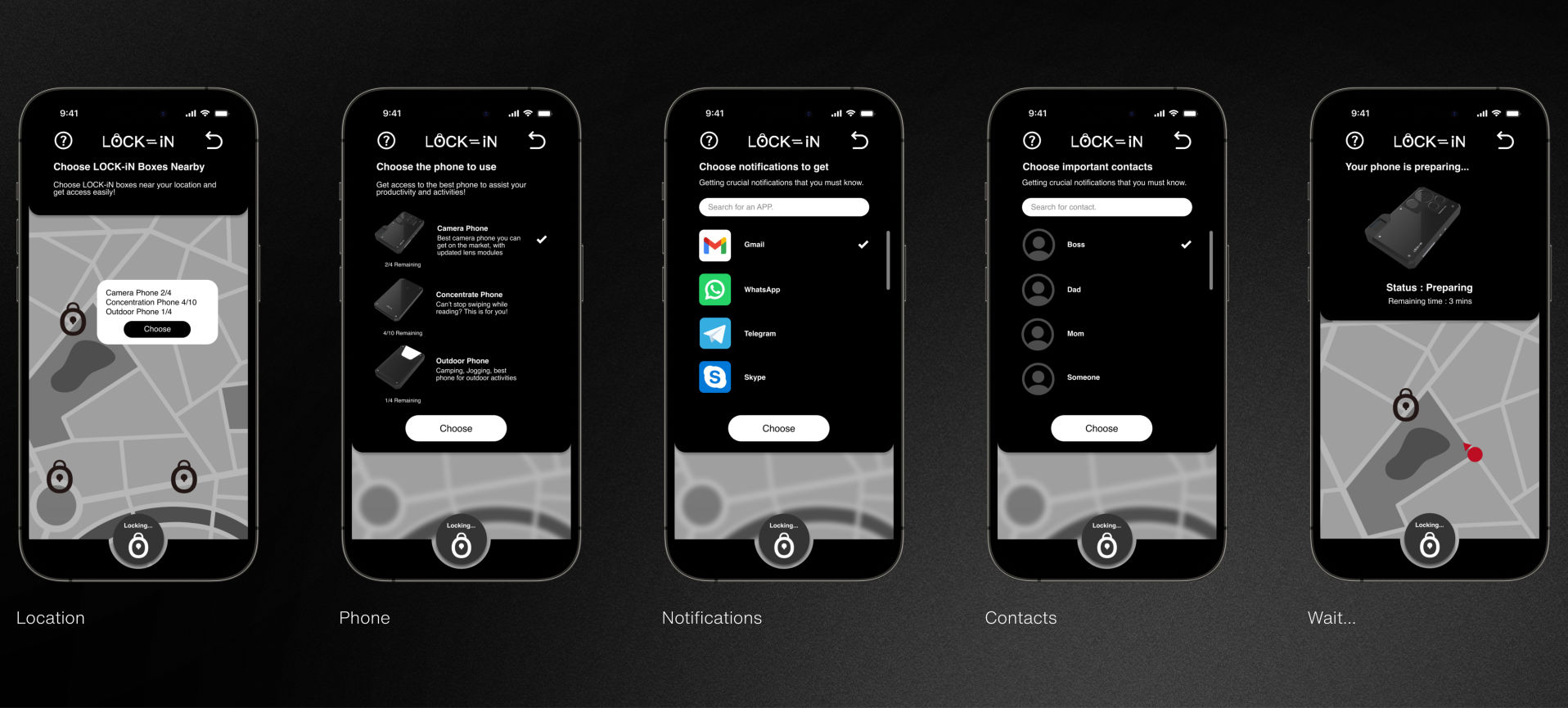
Customizable experience - The app allows users to customize their preferences,
enabling them to receive important notifications from
essential contacts or applications. This way, it helps
alleviate user anxiety about missing crucial notifications
while also limiting phone usage time.
Grayscale design - The user interface of the app was designed in grayscale, as
research has shown that this can reduce the temptation to
use the phone excessively.
Design process
-1916x1086.jpeg)
The design process consist of multiple tools and methods, including:
1. Making mockups
2. Drawing quick rough sketches
3. 3D modeling with Fusion 360
4. APP prototyping
with Figma
Designed and coded by Hantus Chen.